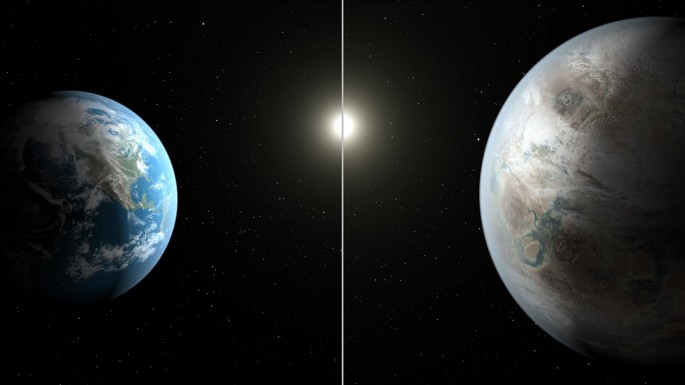NASA just announced today that another planet just like Earth was detected by the Kepler Space Telescope that is orbiting its parent star, also similar to our own sun. Apart from these similarities, this Earth 2.0 is also believed to possess the same distance as Earth to the sun, from its parent star that is necessary for liquid water and life.
This Earth-like exoplanet is the closest alien world that contains the right ingredients for life, called the Kepler-452b that is located some 1,400 light years away in the Cygnus constellation. According to Jon Jenkins who is the head of Kepler data analysis from NASA's Ames Research Center, this is the closest thing that we have to another planet like Earth, he told at a teleconference today.
Kepler-452b is estimated to be 60 percent bigger than Earth in diameter and possesses five times more mass, making it a potential rocky planet. The exoplanet also orbits around a G2 type star that is almost like our sun however, its age is close to 6 billion years old as opposed to the 4.6 billion age of our solar system.
Jenkins adds that this is enough time and opportunity for life to develop and thrive, where the necessary conditions for liquid water and life can exist on this exoplanet.
The exoplanet also orbits its sun every 385 days which is about 5 percent more distant than how Earth is located from the sun. Its parent star's age also suggests that it is about 10 percent larger and 20 percent brighter than our sun, according to Jenkins.
If scientists prove that Kepler-452b is indeed rocky, it can also mean that it can be five times more massive and possess twice the Earth's gravitational forces on its surface. Jenkins predict that it may also reveal a cloudier atmosphere and ongoing volcanic activity as well.
To date, Earth 2.0 is also receiving 10 percent more energy from its parent star compared to Earth from the sun however, when its star was younger, the planet is receiving 64 percent as much energy in the past since the younger parent star used to be only 80 percent of its current size and 64 percent brighter.
When its parent star continues to expand, scientists predict that Kepler 452-b will no longer become hospitable for life and conducive for water which is also a future that is imminent for Earth as well.
To date, Kepler has found 4,696 Earth-like candidate planets overall where 1,030 planets are now confirmed, says NASA. This new study will be published in The Astronomical Journal.




























